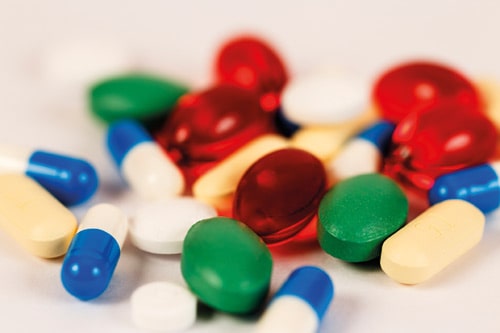
Antibiotic resistance is making a common sexually-transmitted infection tough – and sometimes impossible – to treat, according to the World Health Organization (WHO).
Escalating rates of resistance in the bacteria that cause gonorrhoea (Neisseria gonorrhoeae) are particularly concerning because according to the WHO’s reckoning there are just three new drug candidates in coming through clinical trials for the infection.
Three people have been identified with gonorrhoea infections that do not respond to last-line antibiotics, and all have been identified in countries with very good healthcare infrastructure: Japan, Spain and France. It is highly likely that the ‘superbug’ strain of the STI is already much more common – and being transmitted – in other parts of the world where the disease less likely to be diagnosed.
“These cases may just be the tip of the iceberg, since systems to diagnose and report untreatable infections are lacking in lower-income countries where gonorrhoea is actually more common,” said Dr Teodora Wi, medical officer for human reproduction at the WHO.
Around 78 million people contract gonorrhoea each year worldwide, with infections occurring in the genitals, rectum and throat, with women bearing the brunt of symptoms that can include pelvic inflammatory disease, ectopic pregnancy and infertility, as well as an increased risk of HIV.
“The bacteria that cause gonorrhoea are particularly smart. Every time we use a new class of antibiotics to treat the infection, the bacteria evolve to resist them,” according to Wi.
WHO surveillance reveals a 97% resistance rate to common first-line agent ciprofloxacin, 81% to azithromycin and 66% resistance to the current last-resort treatment – the extended-spectrum cephalosporins oral cefixime or injectable ceftriaxone.
The latter drugs are the only effective option in most countries now and the WHO is now recommending two drugs are given in combination (e.g. azithromycin and ceftriaxone) to boost their efficacy.
As it stands, the three drugs in the pipeline are Cempra’s solithromycin, for which a phase III trial has recently been completed but generated lacklustre results, failing to hit the non-inferiority mark versus older drugs. The company is pressing on with its development however, using an adjusted dosing regimen.
Following behind is zoliflodacin from Entasis Therapeutics, which completed a phase II trial and has just been partnered with the not-for-profit Global Antibiotic Research and Development Partnership (GARDP), paving the way for a phase III trial. Finally, GlaxoSmithKline is developing gepotidacin, which is also in mid-stage testing.
“We urgently need to seize the opportunities we have with existing drugs and candidates in the pipeline,” said Dr Manica Balasegaram, director of the GARDP which is a partnership between the WHO and Drugs for Neglected Diseases initiative (DNDi).
“Any new treatment developed should be accessible to everyone who needs it, while ensuring it’s used appropriately, so that drug resistance is slowed as much as possible,” he added.
In the past few years there has been a renewed urgency to tackle the issue of antibiotic resistance, including a collaboration between companies involved in the Innovative Medicines Initiative (IMI) and moves in some countries, notably the UK, to make the research environment favourable for pharma.
Given the scale of the problem it is widely considered that the only sustainable solution for control of gonorrhoea will be an effective vaccine, but to date candidates based on whole, killed bacteria have not been able to show any protection.




